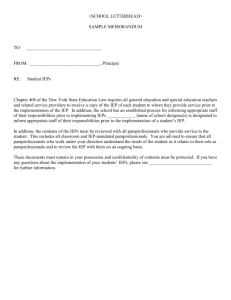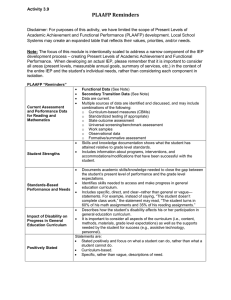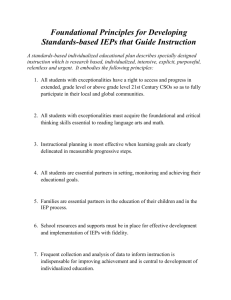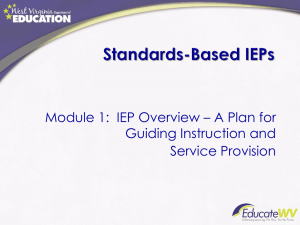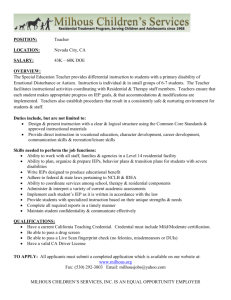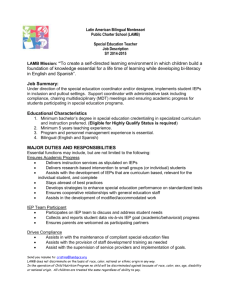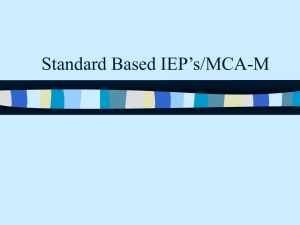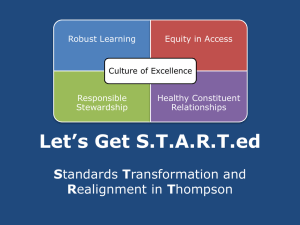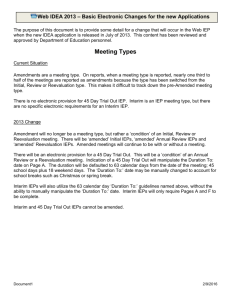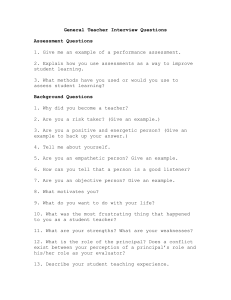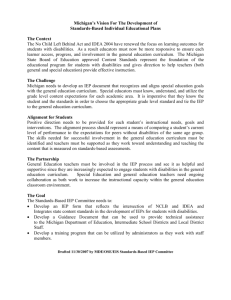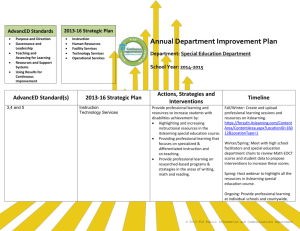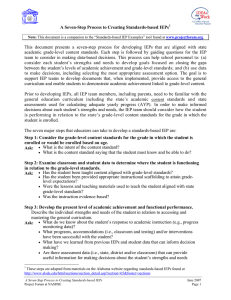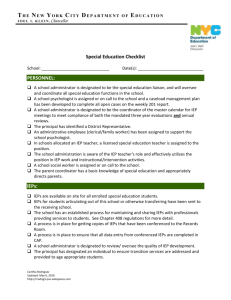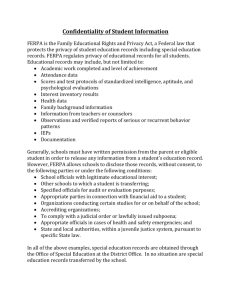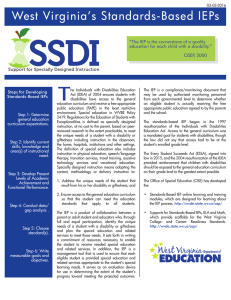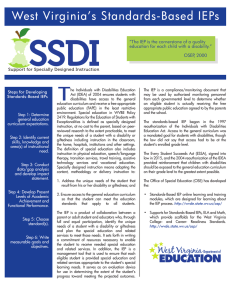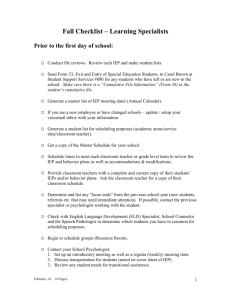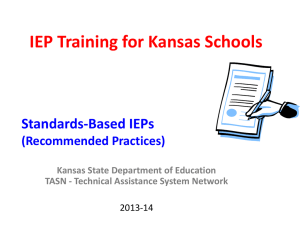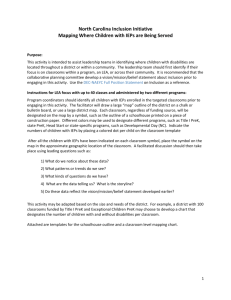Standards-Based IEPs Pre/Post Assessment ANSWER KEY
advertisement
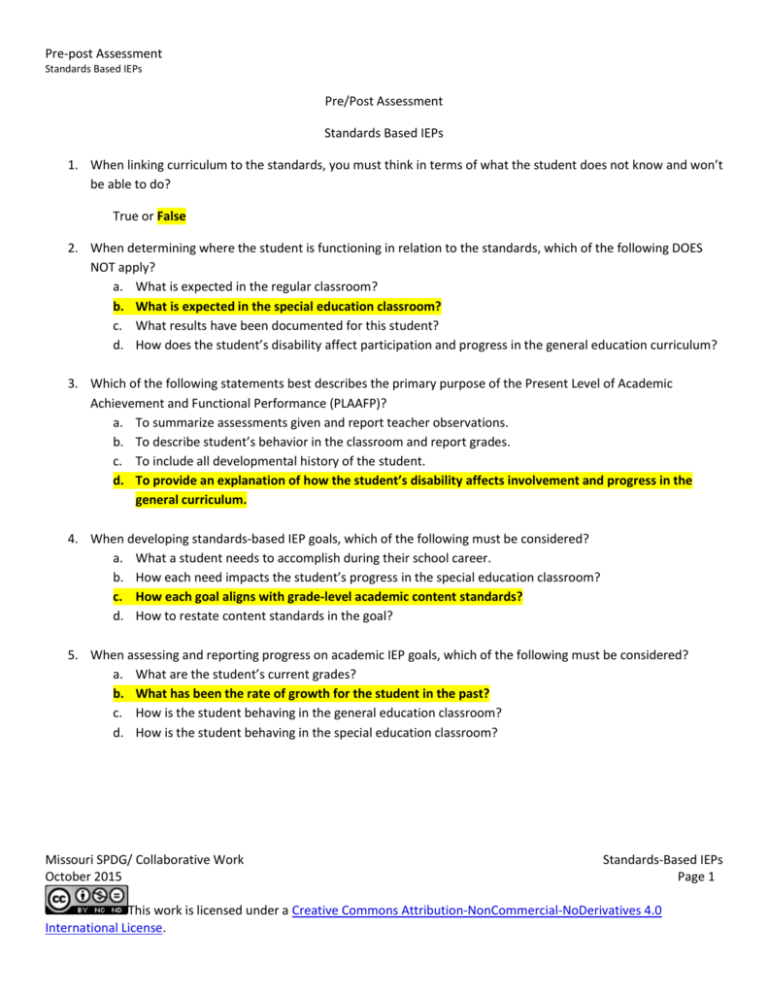
Pre-post Assessment Standards Based IEPs Pre/Post Assessment Standards Based IEPs 1. When linking curriculum to the standards, you must think in terms of what the student does not know and won’t be able to do? True or False 2. When determining where the student is functioning in relation to the standards, which of the following DOES NOT apply? a. What is expected in the regular classroom? b. What is expected in the special education classroom? c. What results have been documented for this student? d. How does the student’s disability affect participation and progress in the general education curriculum? 3. Which of the following statements best describes the primary purpose of the Present Level of Academic Achievement and Functional Performance (PLAAFP)? a. To summarize assessments given and report teacher observations. b. To describe student’s behavior in the classroom and report grades. c. To include all developmental history of the student. d. To provide an explanation of how the student’s disability affects involvement and progress in the general curriculum. 4. When developing standards-based IEP goals, which of the following must be considered? a. What a student needs to accomplish during their school career. b. How each need impacts the student’s progress in the special education classroom? c. How each goal aligns with grade-level academic content standards? d. How to restate content standards in the goal? 5. When assessing and reporting progress on academic IEP goals, which of the following must be considered? a. What are the student’s current grades? b. What has been the rate of growth for the student in the past? c. How is the student behaving in the general education classroom? d. How is the student behaving in the special education classroom? Missouri SPDG/ Collaborative Work October 2015 Standards-Based IEPs Page 1 This work is licensed under a Creative Commons Attribution-NonCommercial-NoDerivatives 4.0 International License.
